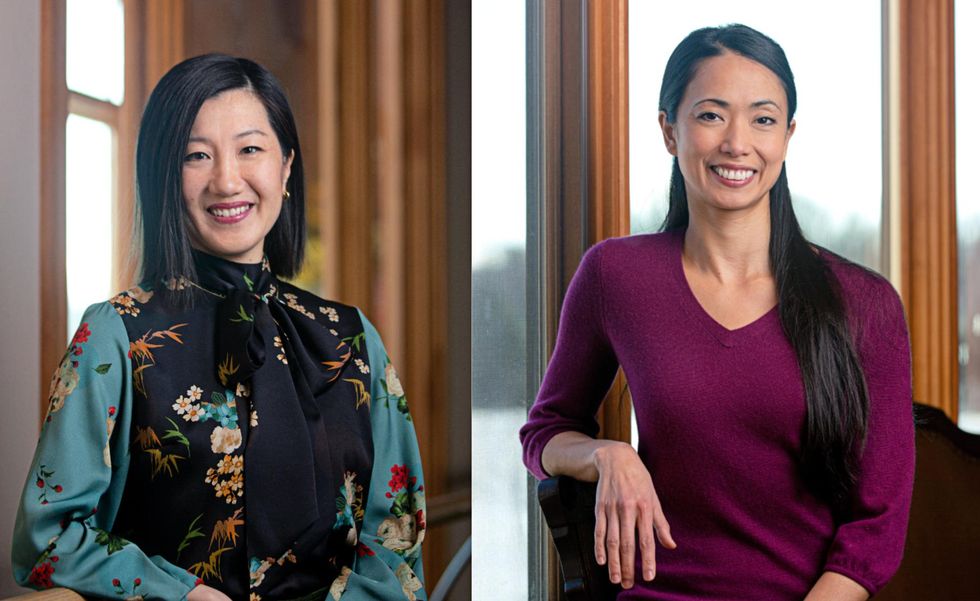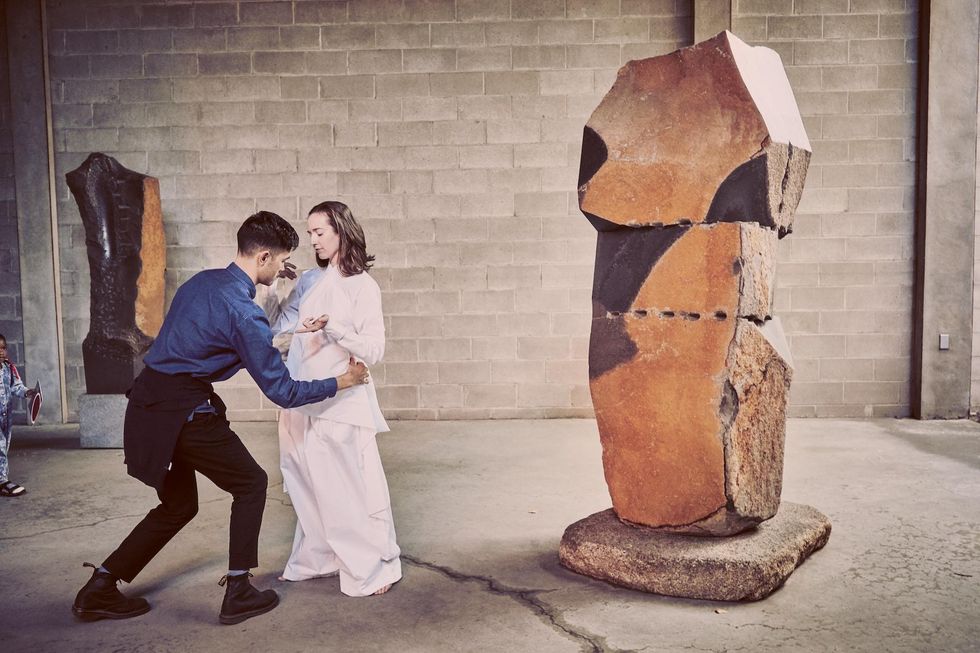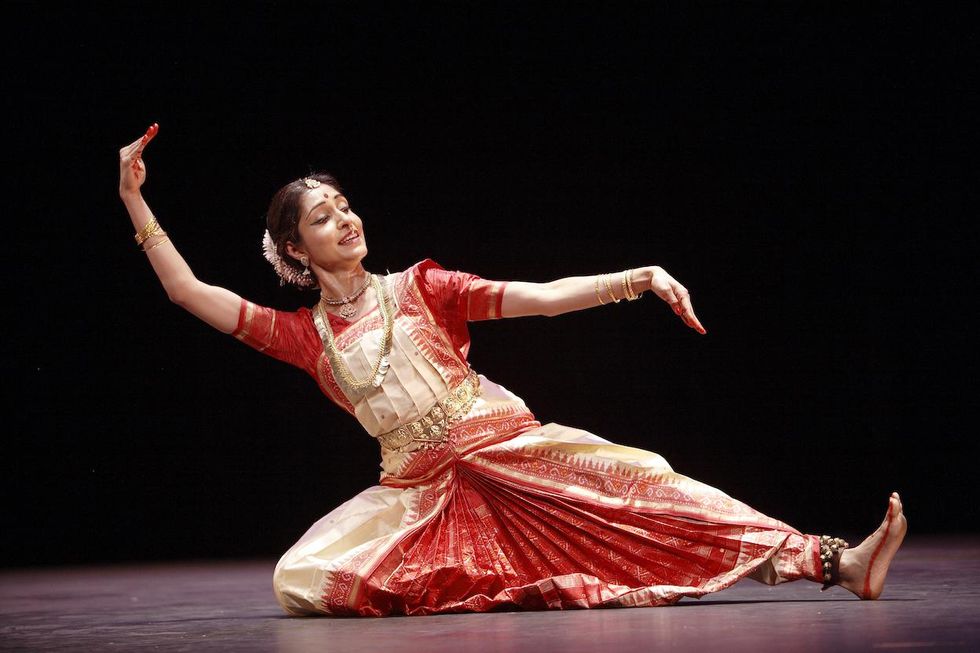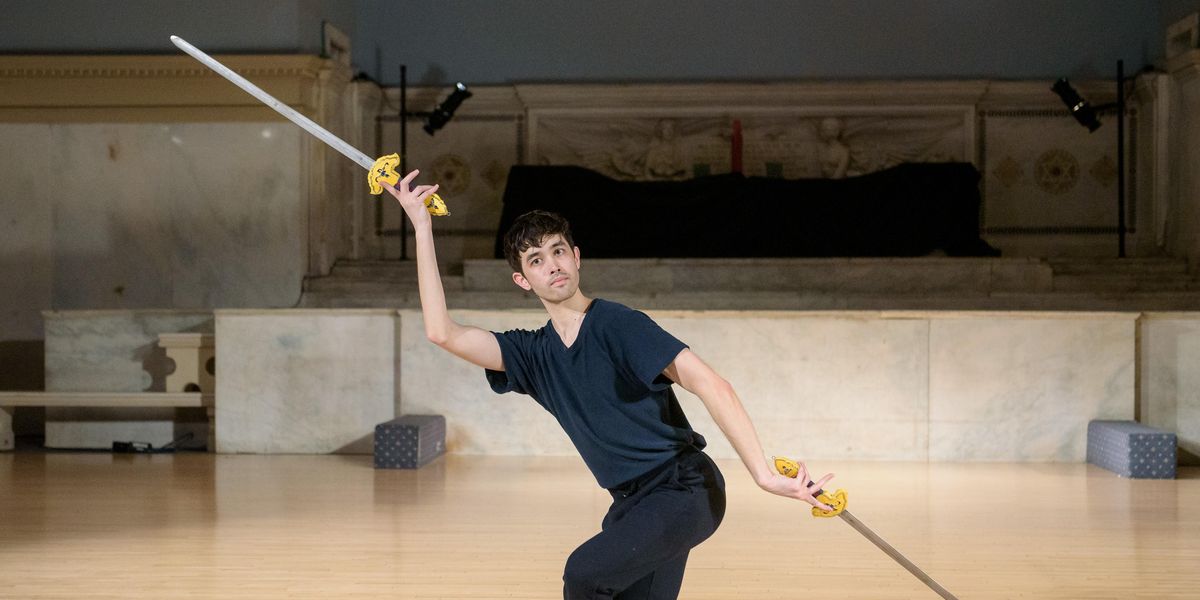What It’s Like Working as an Asian American in Dance
“Asian American” is a term that is inadequate to capture the breadth of diversity and experience it seeks to represent. Just as “dance” is shorthand for an endless range of styles from jazz to Kuchipudi, “Asian American” encompasses a vastness of cultures ranging from Korean adoptees to South Indians living in the U.S. The Asian-American experience in dance is as varied as the individuals who find fulfillment through movement.
In honor of Asian Pacific American Heritage Month, Dance Magazine spoke with six Asian Americans working in the dance industry. This group is a small representation of the rich diversity within the dance field’s Asian-American community. Here are their reflections on their lives as Asian Americans working in dance and their hopes for an inclusive future.
Stella Abrera and Sonja Kostich
Artistic director (Abrera) and chief executive & artistic officer (Kostich), Kaatsbaan Cultural Park

Quinn Wharton, Courtesy Kaatsbaan
Stella Abrera:
I don’t think I understood the impact representation had until I was contacted by a bunch of wonderful, young Filipino ballet students after I was promoted to principal dancer at American Ballet Theatre. These girls wrote to me and told me their stories. I hadn’t realized how many young Filipino kids in ballet face discrimination. I was so lucky in my journey that I didn’t come up against that, but hearing their stories made me realize why it’s so important for someone who looks like me to do what I’m doing.
Sonja Kostich:
Having someone who looks like you or has a similar history or economic background or whatever it is—that creates connection. Young people need that connection with somebody they admire and respect to give them that confidence and encouragement. When I was a young dancer, it was wonderful to have people like Yoko Ichino, Marianna Tcherkassky or Elaine Kudo to say, “Oh, I look like them.”
Abrera:
Yes! I was just thinking about Elaine in Don Q and how I used to stare at her. Now I realize that’s why!
Kostich:
Had they not been there in front of me, who knows if I would have thought, “Oh maybe I shouldn’t pursue ballet?” Because there were those figures there, I felt like I could do that, too.
Abrera:
Thinking back on how I used to feel as a little kid watching Elaine, I realize now I was so obsessed with ballet and wanting to be a ballerina that I didn’t actually realize that everyone around Elaine didn’t look like her. They were all mostly white. I guess that’s the whole system, right? We didn’t realize that that was what was set up. This was the norm.
Kostich:
We live in a time when people like Stella and I have these opportunities that I know did not always exist. We are very grateful and at the same time can take confidence in knowing that we’ve worked really hard, we’ve studied really hard, and we’ve taken on many, many different roles prior to this. Part of our mission at Kaatsbaan is to be inclusive—inclusive in our programming, our artists, our staff and our board. The more diversity you have, the more perspectives you can draw from, which is so important in order to do work that’s relevant and can actually have an impact.
Abrera:
After many generations of trailblazers and people who have paved the way, people like Sonja and I are able to live out our dreams and pursue our careers in dance and leadership positions. How amazing to be in a time when we can confidently move forward with those dreams. Generations before us were faced with challenges where they would not have felt that confidence.
Kostich:
Part of what we strive for at Kaatsbaan is to provide mentorship to the next generation. Stella and I spoke to a class at Princeton. These students are brilliant young people who are studying dance, who love dance, and are double- or triple-majoring in things like rocket science and engineering. It feels good because many of them are Asian women, and it’s nice to know that we can be there for that generation.
Abrera:
And to all the young Filipino dancers out there: Being Filipino is awesome and loving ballet is awesome. Work your butt off, be kind to others and don’t be afraid to dream big.
Benjamin Akio Kimitch
Dance artist, program director and associate curator, Danspace Project

Kimitch in rehearsal with dancer Julie McMillan for his piece Ko-bu at The Noguchi Museum
Monika Kratochvil, courtesy Kimitch
Being Hapa in suburban Minnesota, where I grew up, I was surrounded by white people and was very unaware of my racial identity. I would go to a Japanese Buddhist Church on Sundays, and then I would go to high school and not talk about my culture. Working within predominantly white, American modern-dance spaces, I never allowed myself to be confronted with it or question my identity. Now, I’m realizing, when I am in dialogue with other Asian artists or Asian administrators, there’s this energy, this camaraderie, this code that immediately comes to the forefront that jolts me. Like, “Oh, my God, there’s some kind of code-switching that’s happening here that I haven’t been aware of.”
I was more aware of it earlier in my artistic life because I was coming into auditions for dance conservatories and universities with a Chinese dance background. With ballet, you’re being asked to organize your body like a French king, and I think I organized my body like a Chinese folk dancer or something. I have no regrets about being pushed into learning ballet, Graham technique and Cunningham. I love having more tools at my disposal. For me, the difference is that I’m seeing ballet and other contemporary forms of dancing on an equal plane versus these hierarchies that exist in the dance world.
My interest is primarily in more progressive routes of experimentation. I’ve found in my work, even though I’m reimagining a traditional form, there are certain signals that, for a non-Asian presenter, curator or audience member, they still see cultural dance or traditional dance. It’s oftentimes written off and not welcomed into contemporary discourse. It’s getting better, but I remember auditioning for these “emerging artist” things years ago, and it was really hard to get past that barrier and have those conversations. I have found a great community in the downtown experimental dance spaces, and I’m excited for all of us—Asians and non-Asians—to build a dance community where there can be a bridge for some of these things that haven’t existed yet.
Anuradha Nehru
Founder and artistic director, Kalanidhi Dance

When I moved to the Washington, DC, area in the ’80s, I had very few performance opportunities. I decided to start a school because teaching was the only way I could think of to keep in touch with Kuchipudi dance. Four or five other Indian classical dancer friends and I created a platform for performance—IDEA (Indian Dance Educators Association). We felt incredibly isolated. I formed Kalanidhi Dance in 1991, simultaneously developing as a teacher and developing high-quality dancers. In 2005, I formally created our dance company. By this time, the Indian community in the DC area was much larger, and my students, who started as young kids, had, after 10 to 15 years of study, become amazing dancers. Most importantly, they were incredibly passionate about Kuchipudi.
It’s always challenging as an ethnic dance company in the United States. We have far more opportunities now than ever before, but it’s still hard. But I’m deeply passionate about the style and its versatility in being able to tell stories and connect with diverse audiences. Kuchipudi is just another language. The next generation of dancers are really taking up that challenge now.
I feel we’re still very much insular. A large amount of the Indian dance community is very happy to continue to dance and cater to the Indian diaspora, which is a great community. I feel, if we have made this land our home, we do need to be part of the larger landscape. This is part of the problem. We’re all remaining in our individual bubbles. We don’t understand each other, we don’t connect with each other, and what better way to do that than through dance and music? I’m quite passionate about wanting to break that bubble.
Marisa Hamamoto
Founder and artistic director, Infinite Flow Dance

Kyle Maclennan, Courtesy Hamamoto
The essence of dance itself is a home and identity for everyone. I can still remember when I was 6 and 7 in dance classes and feeling connected with myself, the music, the dancing and with everyone in the group. I can feel that connection to this day.
I think a lot of Asian Americans and multiracial Asians live in this duality of trying to figure out who they are. There’s a lot of cultural trauma and cultural barriers that prevent us from forging ahead, but I know that we have the capacity to pave the way for ourselves. We can use the beauty of our culture to build what we want to see.
It’s dance that connects humanity in so many ways, and our little dance world that we live and work in does have a significant role for the greater world. We are in a generation where we are able to define on our own what America is. Millennial and Gen Z artists are able to bring change to the industry. I’m here to encourage young artists to understand that you don’t have to be placed in a box. I come from the mindset where if you’re not liking what you’re seeing and you’re not able to get ahead in a box, create your own. For any Asian Americans out there who feel like they’re not being seen or heard and they’ve done everything they possibly can, perhaps it’s time to embark on your own journey.
Allison Walsh
Ballet dancer and Broadway performer
As a dancer, I was good at taking up space. That’s what I love about dancing, which was maybe off-putting to some people. There is this amazing Hawaiian lawyer named Mari Matsuda, and a quote of hers really struck me: “The woman who was hired to be good and smart and silent…is suddenly acting like an equal. Any Asian woman who has been there knows there is a special wrath reserved for those moments. It is disproportionate to the substantive challenge. It is engaged. It is physical. It is scary.”
I have a whole list of times where I’m like, “What is it about me that there’s this pushback from the other end? It must be me. What’s wrong with me?” Even if I am more cordial and thoughtful than others, as someone who advocates for myself, stands up for what I believe is right, and is not afraid to say it, I experience this disproportionate anger.
When I was younger, a reporter came up to me on the street. This was before social media and it was exciting. We talked about a lot of different things, but Black Swan had just come out and it was also around Nutcracker season, so two sound bites were published that really upset the company I danced for. I said that “ballet was f—ing hard” and, though I love The Nutcracker and grew up doing it, because I’m an ethnically ambiguous person I was put in every divertissement, and I said, “Honestly, it’s a little bit racist, but there’s a reason why people come back every year.”

The artistic director was livid. He told me what I said wasn’t proper decorum. He said something like “You’ve let the company down.” He called a company meeting and made me stand in the middle of the room while everyone else was seated around me and proceeded to berate me in front of everyone, including the executive director.
I’ve worked in so many different mediums of dance at this point and, for me, having people of color in positions of creative control made a huge difference. When I think about the people who have given me opportunities, it was Albert Evans, Elaine Kudo and Ed Liang. I’m not saying it was always like that, but I definitely felt like when I really got a good role, it was someone like Shelley Washington setting Twyla Tharp’s work on me. They were more open to empathizing with a different look, a different style and my own personality.
It took me a really long time to be okay with that whole experience to share it with people. I think it is changing. I’m very hopeful. I’m so proud of myself that I’ve stayed within these industries for as long as I have, and I hope no one is discouraged to not follow their path. You are allowed to speak up. You are allowed to lead. You are allowed to challenge. When I think back to my 25-year-old self, and the way I was humiliated and shamed, I feel bad for myself, but I look at her and I am proud of her. It took this much time to catch up, but I know what I said was true. They couldn’t keep me from performing, and honestly my career has been so much more fruitful.




